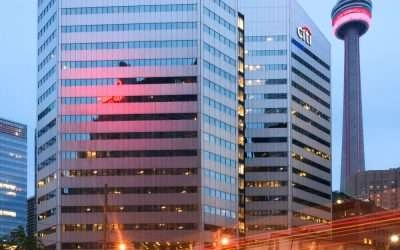As an architectural photographer, you need a lens that can capture the intricate details of buildings while also providing a wide field of view.
Each of these lenses offers exceptional image quality. And they cover many of the focal lengths you would want to use.
Here are our top picks for the best lens for architectural photography:
Zoom Lenses
Zoom lenses are a type of photographic lens that allows the photographer to change the focal length of the lens, either by rotating the barrel or by using a zoom lever. This gives the photographer more flexibility in terms to compose their shots and getting close-ups or wide shots of their subject.
Canon EF 16-35mm f/2.8L III USM Ultra Wide Angle Lens:
This Canon lens is ideal for capturing wide shots of buildings and landscapes. It has a fast maximum aperture of f/2.8, making it great for low-light photography, and its ultra-wide field of view is perfect for capturing the entire façade of a building.
Nikon 14-24mm f/2.8G ED AF-S Nikkor Wide Angle Zoom Lens:
This Nikon lens is another great option for wide shots of buildings and landscapes. Its fast maximum aperture of f/2.8 makes it ideal for low-light photography, and its 14-24mm focal length range gives you the flexibility to capture interior photography extremely well.
Nikon AF-S Nikkor 24-70mm f/2.8E ED VR Standard Zoom Lens:
This Nikon lens is a versatile option for architectural photography, as it can be used for everything from wide-angle shots to close-ups and detail shots. Its fast maximum aperture of f/2.8 makes it great for low-light photography, and its Vibration Reduction (VR) system helps to reduce camera shake.
Tilt Shift Lenses
Tilt-shift lenses are a type of photographic lens that allows the photographer to either tilt or shift the camera lens.
By using tilt you can adjust the plane of focus to be selective.
Shift on the other hand allows you to shift the lens up, down, left, or right. By doing this you can then move the frame of the image up or down. This is a blessing when it comes to photographing tall buildings because you can include the entire subject without having to point the camera up. Meaning your lines vertical lines stay straight. Skewed vertical lines are not acceptable in architectural photography.
*All of these lenses are manual focus and do not feature optical image stabilization. They do however offer the highest image quality and minimal distortion. They would also be considered prime lenses.
PC-E Nikkor 24mm f/3.5D ED Lens:
This Nikon lens is a great option for wide shots of architectural exteriors and interiors. Its 24mm focal length allows you to get close to your subject, and its f/3.5 maximum aperture is ideal for low-light photography.
The 24mm offers less distortion and can be a bit more pleasing to the eye for smaller buildings such as residential homes.
PC-E Nikon 19mm f/4 ED Lens:
This Nikon lens is a great option for wide-angle shots of buildings and landscapes. Its fast maximum aperture of f/2.8 makes it ideal for low-light photography, and it is 19mm focal length gives you a wide field of view to work with. The shift allows you to capture tall buildings and very difficult structures to photograph.
The 19mm is optically superior to the 24mm and gives the option to both shift and tilt at the same time.
TS-E 17mm f/4L Tilt-Shift Lens:
This Canon lens is a versatile option for architectural photography, as it can be used for everything from wide-angle shots to close-ups of details.
Its tilt-shift design allows you to correct converging lines and shift perspective. It is probably Canon’s best wide-angle lens and offers superior image quality.
TS-E 24mm f/3.5L II Tilt-Shift Lens:
This Canon lens is another great option for architectural photography, as it can be used for everything from wide-angle shots to close-ups of details.
Its fast maximum aperture of f/3.5 makes it acceptable for darker rooms and its tilt-shift design allows you to correct converging lines and shift perspective.
Notes on Ultra Wide Angle Lenses ( extreme wide angle lenses )
Ultra-wide angle lenses can be essential for photographing small rooms, but they have their trade-offs. They can cause lots of distortion and they can make a room or home look unappealing.
Don’t get stuck in a mindset that wider is better, because usually, it is not.
Other Lenses
Architectural photographers will use many different types of lenses for different results. The lenses above are just a guideline. Recently I have been using a 50mm f2 Zeiss for details because I like the look of it.
Conclusion
You as a photographer are not stuck to one thing. Use whichever gear you want, or works best for you. Image quality is always mostly dependent on the photographer first and the photo equipment second.
So there you have it, our top picks for the best lenses for architectural photography. Whether you need a wide-angle lens for capturing sweeping shots of buildings or a tilt-shift lens for correcting converging lines, we hope that one of these options will be the perfect fit for your needs.
P.S. Photographing architecture is considered architectural photography, not architecture photography.








0 Comments